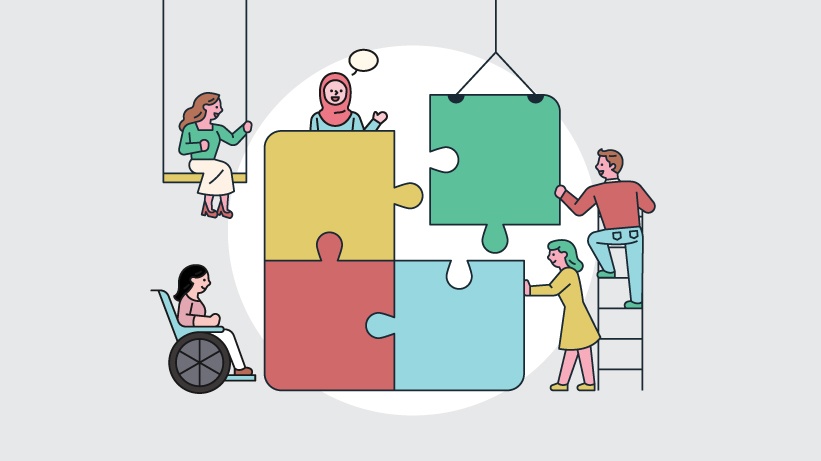The Importance Of Having A D&I Strategy
Workplaces have gone through a lot of changes in the past two years or so. Remote, hybrid—you name it! Workplaces now are more diverse than ever before. There’s an increase in the number of varied personalities we get to see in any organization, especially with organizations hiring globally nowadays because of the enablement of remote working opportunities. A diverse workplace allows everyone to do their best work by eliminating unconscious bias in the hiring process, providing equal benefits and training opportunities, and offering promotion pathways that lead to leadership roles for everyone. In a diverse workplace, people should feel welcome, and adapt to differing opinions, beliefs, and experiences. Everyone must feel like they belong.
What Diversity and Inclusion Means In Practice
Diversity and inclusion (D&I) are words that are now part of the standard vocabulary of most forward-thinking companies, yet many of those companies still might not have a clear sense of what "diversity and inclusion" means in practical terms. Employers need policies that are also diverse to match their different audiences. The conversations about diversity and inclusion (D&I) have recently received global attention because of the power of social media, increasing knowledge of global events, policy measures, advocacy and consultancy activities, and some progressive judgments from the judiciary. With high-profile exits and revelations of workplace discrimination, harassment, and prejudice, the setting for D&I activities has shifted substantially. The media attention on D&I infractions has pushed key concerns in the workplace to the forefront and called into question the prevalence of inclusive cultures in which all employees are treated with dignity and respect at work. It is no more a question of whether organizations across the world require D&I initiatives, but rather of how businesses can carry them out efficiently.
The phenomenon of workplace diversity and inclusion is gaining enormous traction, and it is no longer just about equal treatment but an overall sense of belonging. As our workforce becomes more diverse, we must continue to ensure that we can build an inclusive environment for all. This includes recognizing the unique challenges that diverse groups of employees face and developing strategies to overcome them. The emphasis must be on making people feel welcome and adapting to differing opinions, beliefs and experiences. Diversity and inclusion caters to creating an environment where diversity—the combination of characteristics, such as gender, race, sexual orientation, and others—is valued. Today's diverse workplace is filled with challenges and opportunities that must be addressed. Diversity and inclusion is the strategic approach taken to ensure a fair and inclusive workplace where everyone has an opportunity to succeed. By recruiting, hiring, and retaining a diverse workforce, we are better equipped to serve the needs of our customers.
Create An Inclusive Work Culture For Better Results
67% of job seekers consider workplace diversity an important factor when considering employment opportunities, and more than 50% of current employees want their workplace to do more to increase diversity. Even when working with a range of people from different backgrounds, leaders need to foster an inclusive work culture for better results. Organizations need to learn how to create a workplace in which each individual is treated fairly, irrespective of gender, ethnicity, caste, community, or physical characteristics. For creating an inclusive environment in the workplace, organizations need an understanding of new-age diversity management and the legalities associated with it.
While diversity and inclusion are concepts that are discussed by companies all over the world, the goal of diversity and inclusion is often not very well understood. Different people in different companies have different definitions as to what they perceive as diversity, or what they perceive as inclusion. Further, there is a lack of information on how companies can create a diverse workforce and an inclusive culture in the workplace, and this can lead to various internal and external conflicts where a company could end up losing money on lawsuits. Businesses cannot afford to ignore the benefits of imparting knowledge on diversity and inclusion within the workplace. A diverse workforce is essential to drive innovation, creativity, and productivity; it is fundamental to securing a competitive advantage, through an innovative edge, in a more competitive marketplace. 78% of employees who responded to a Harvard Business Review (HBR) study said they work at organizations that lack diversity in leadership positions.
Having A More Diverse Team Leads To Better Innovativeness And Profitability For Your Business
Learning and Development (L&D) partners help businesses identify what’s missing in their D&I efforts and create beautiful gamified eLearning solutions, based on real scenarios, with the ability to calculate an individual’s progress using performance tracking through game-based assessments. Games are a fun way to learn because they provide interactive experiences that actively engage learners and lead to remarkable participation, and enable learning goals with advanced options for a collaborative learning environment to be accessed and used remotely. Organizations have found true help in these testing times by engaging with L&D partners for boosting their strategies.










